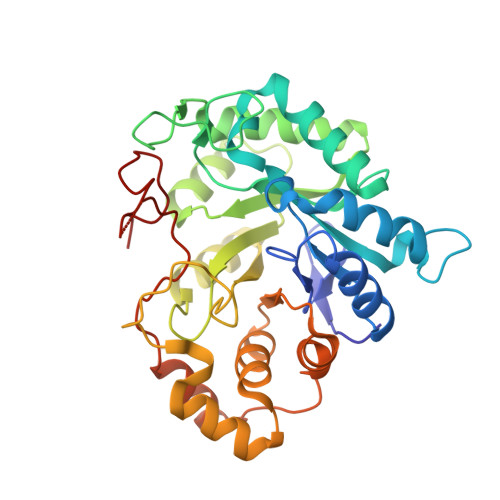Structure of aldehyde reductase holoenzyme in complex with the potent aldose reductase inhibitor fidarestat: implications for inhibitor binding and selectivity
El-Kabbani, O., Carbone, V., Darmanin, C., Oka, M., Mitschler, A., Podjarny, A., Schulze-Briese, C., Chung, R.P.(2005) J Med Chem 48: 5536-5542
- PubMed: 16107153
- DOI: https://doi.org/10.1021/jm050412o
- Primary Citation of Related Structures:
3H4G - PubMed Abstract:
Structure determination of porcine aldehyde reductase holoenzyme in complex with the potent aldose reductase inhibitor fidarestat was carried out to explain the difference in the potency of the inhibitor for aldose and aldehyde reductases. The hydrogen bonds between the active-site residues Tyr50, His113, and Trp114 and fidarestat are conserved in the two enzymes. In aldose reductase, Leu300 forms a hydrogen bond through its main-chain nitrogen atom with the exocyclic amide group of the inhibitor, which when replaced with a Pro in aldehyde reductase, cannot form a hydrogen bond, thus causing a loss in binding energy. Furthermore, in aldehyde reductase, the side chain of Trp220 occupies a disordered split conformation that is not observed in aldose reductase. Molecular modeling and inhibitory activity measurements suggest that the difference in the interaction between the side chain of Trp220 and fidarestat may contribute to the difference in the binding of the inhibitor to the enzymes.
Organizational Affiliation:
Department of Medicinal Chemistry, Victorian College of Pharmacy, Monash University (Parkville Campus), 381 Royal Parade, Vic 3052, Australia. Ossama.El-Kabbani@ vcp.monash.edu.au

















